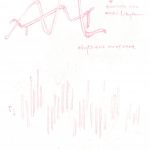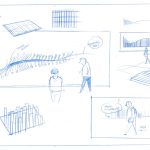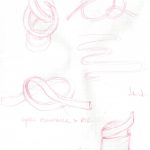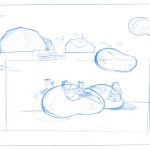Initial Brainstorm
Fiona x Shanelle
Slowing down the pace of life in NTU.
In a fast-paced society like Singapore, the stress level of University students can be very high. We noticed that the walking pace around NTU is as fast as it can go, there is no space/chance for students to relax.
Our aim is to create a calming experience for students in NTU.
CONCEPT:
Adapting the movement of humans in the surrounding and translating that into a playful interaction. With a sculpture that mimics the movement of one’s footsteps, one would slow down their pace to interact with it.
INSPIRATION:
Pacing translates into rhythm or rhythmic patterns. Rhythms comes in many different forms. Sound, lighting, kinetic movement. Rhythms can also be repetitive in different frequency.
Our idea is to use sensors to detect one’s walking pace, that will then be translated into rhythmic patterns and extracted visually or auditorily onto the sculpture.
LINK:
FEEDBACK & QUESTIONS:
Too idealistic. Is there any existing installation that works the same way? There is a certain level of difficulty when it comes to integrating technology in a sculpture. What will happen when there are too many students on the path? How will the result of the interaction overlap? Are you certain that this will work? Research more into the practicality and feasibility of this concept.
The NTU cycle.
How many times have you encountered the same event in NTU? Take for example the number of times you see bus 179 or the campus rider loops around NTU. There are many cycles and repetition happening around us in NTU. Cycles are so common that we take them for granted as much as we do the air we breathe. Our aim is to produce an abstract art piece based on the theme “the NTU cycle”.
CONCEPT:
Create an abstract representation of cyclic recurrence in a sculpture. One should be able to interact it with over and over again/the sculpture should reflect the idea of cyclic recurrence.
INSPIRATION:
A cycle can be represented by a never-ending loop/phenomenon. The cycle of NTU could be thought of as students entering and leaving school day by day, over and over again. Based on that as a starting point, we want to depict and repeat that “in and out” movement in a sculpture.
Using a proximity sensor, the sculpture will detect one’s distance from the sculpture. When one is close to it, the colored fluid/sand (could be anything) would be attracted to you. Much like how a magnet attracts magnetized metal dust.
FEEDBACK & QUESTION:
Too idealistic, too much technology involved. Do more feasibility research. A cycle is not a specific phenomenon to NTU’s student. It happens everywhere, to everyone. Find the data that is significant only to NTU. The theme “cycle” itself is too broad as it is relevant to everyone.
Enhance human-nature interaction in NTU.
There are many trees in NTU yet interaction between us and nature is minimal. Our aim is to build on to the value of existing physical features of nature in NTU.
CONCEPT:
Create an idea of human’s presence in nature. With the thought that a person was once present in a particular spot, it invites one to interact as the familiarity would make one feel emotionally secure.
INSPIRATION:
Wrinkles are a symbol of presence. When a three-dimensional figure gets crushed after being used, naturally it gets wrinkled. Plastic bag, tissue papers, can drinks, clothes. When a three-dimensional figure gets dented as it supports the weight of a person, naturally it gets wrinkled. Beanbags, pillows, blankets, couch.
So our idea for the sculpture is to recreate wrinkles in natural objects (such as stones) to facilitate interaction between us and nature.
FEEDBACK & QUESTION:
Somewhat interesting topic. Other factors as to why people do not go to nature is because of insects or the weather. Be practical. Instead of bringing us to nature, look into bringing nature to us. There are many ways to increase the interaction between us and nature. Think more, look deeper, question yourself, research more.




